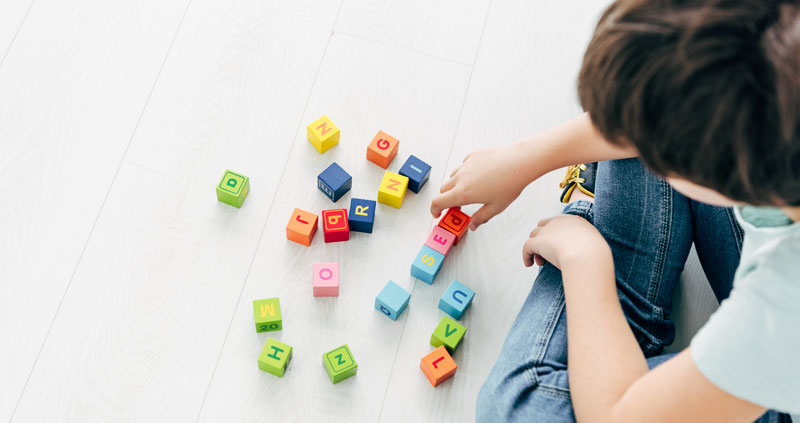Helping Kids with Dyslexia Become More Confident Readers
Dyslexia is a learning disorder that makes it difficult for the child to read. The identification of phonemic sounds and associating the printed sounds to the corresponding words, becomes a task for students who suffer from dyslexia. Some kids read reversed letters like; ‘pot’ for ‘top’ or ‘ten’ instead of ‘net’. Besides having difficulty sounding out words, children also find it a daunting task to learn spellings, as compared to other students in class.
Dyslexia is a very common learning disability, and it affects about 5-10% of the world population. Also, once the preschooler is identified with slow progress in reading, writing, and spellings, it is likely that he will continue to have difficulty even in higher grades. So, one can’t outgrow dyslexia and it is pretty much a lifelong problem.

Here are some strategies that will enable parents and educators to help students with dyslexia
Focus on multi-sensorial learning
Engaging in more than one sensory experience will help students absorb and process information in a manner in which they are able to remember and process it. So along with sight and sound, provide students with stimulus that promote tactile and rhythmic bodily movement.
Some multi-sensorial activities include
- Formation of letter sounds with materials such as pasta, beads, string, etc.
- Hand movement or action while saying the sounds aloud. So, if the sound is ‘s’ children make a snake-like formation with their palm in the air to relate the action and the sound.
- Mystery bag activity includes having a pouch full of different objects like; spoon, pen, crayon, boat, and children have to identify the item by touching and feeling it and then correlate the beginning sound of the object to the item, like for pen the beginning sound is ‘p’.
- Stick duct tape on the floor in the formation of any letter sound. For example; if the sound ‘c’ is to be taught, then stick tape in a curvaceous ‘c’ manner and ask the child to walk over it. By engaging all muscles and repeating the sound ‘c’ as they walk, children are learning a great deal.
- In the find the missing sound game, children have to paste the missing sound on the chart paper, to complete the word.

Make special Arrangements
Line Reader
Purchase a line reader and place it on the book focusing on the line you wish the child to pay attention to. This helps avoid distracting the child and confusing him, as to where to look on the page. It is common in dyslexia for children to see swimming or floating words, and this practice will help manifold.
Colorful Keyboards
In dyslexia, the brain does not properly process the characters printed on the keyboard and hence special alterations have to be made. The keypads are made slightly larger in size, leaving more distance between the keys, this helps learners comfortably identify and press the correct input key. Also, the keys are colored differently, in a special keyboard. Instead of having all keys black in color, it is modified to be multi-colored; blue, red, orange, and green.
App-based Learning
There are also many digital apps designed to aid special learners. Simply download them onto your phone or iPad and practice phonics and letter formation in a play-way method. The child uses his finger to trace over letter sounds and they are free to choose a background template; like a beach scene or sky, to add some excitement to learning.
Audio Feature
Since reading is a rather strenuous task for dyslexic learners, they can make use of e-readers which are readily available on the app store for download. One such e-book reader is the Highlights Library and it has an impressive subscriber base in the Middle East including Dubai. Highlights has 100’s of books to choose from and students can use the audio ‘read aloud’ feature so that all children need to do is listen and understand the meaning of the story. If you wish to learn more about Highlights Library & subscribe to it anywhere from GCC or UAE, visit our website https://knowledge-hub.com/highlights/
We are sure with little practice and individualized attention; dyslexia will be manageable by most students. The school and parents need to work closely and be transparent about the child’s progress. The child may need lots of support and motivation all through his learning journey, so be there for them and watch them conquer greater heights in life.






Recent Comments